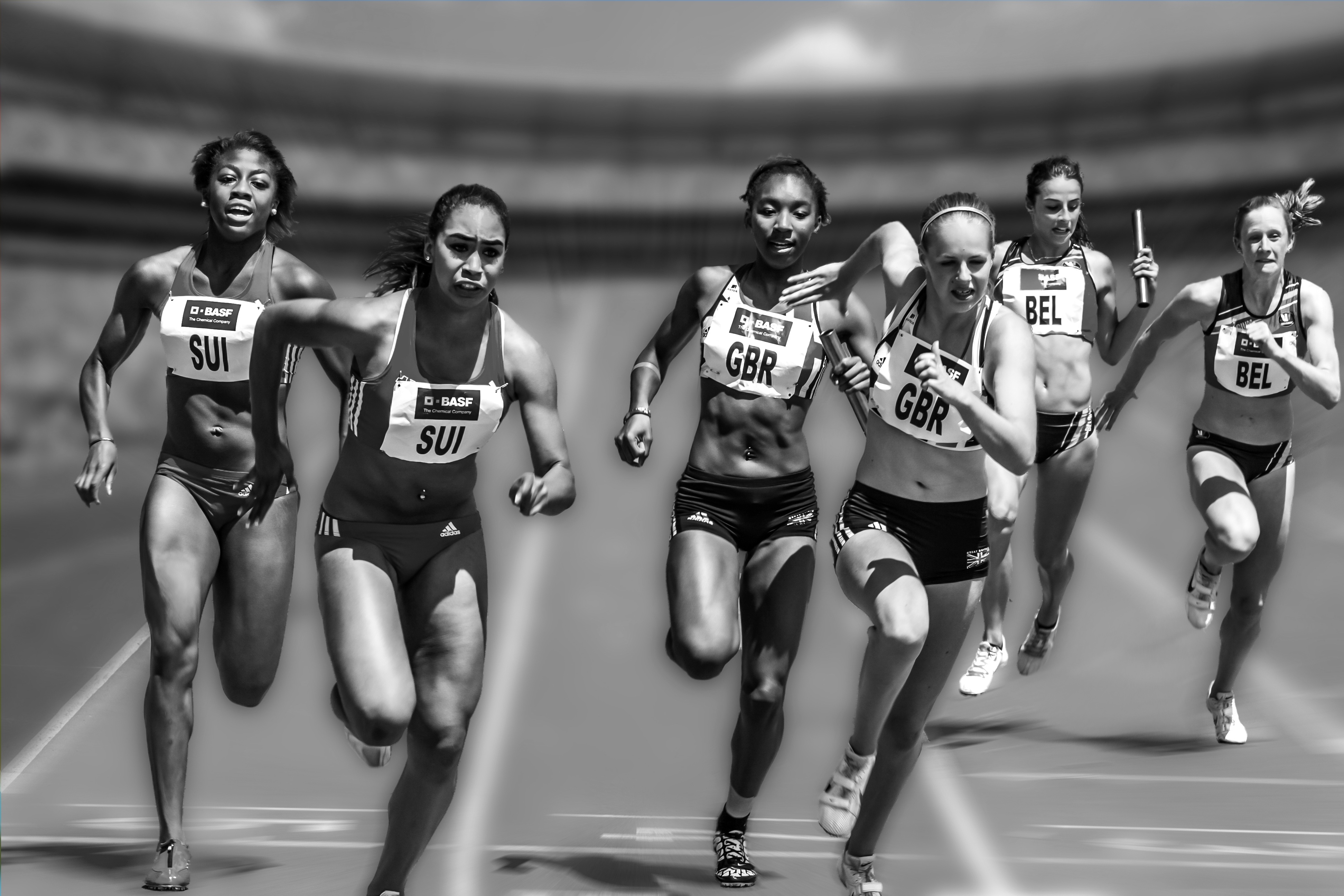The November issue of Techniques has an interesting article on sprinting. It is essentially taking a physical therapy assessment and applying it to sprinting, advocating that “…the foundation of poor sprint technique originates from one or more muscle imbalances (dysfunctional motor patterns) within the athlete” (pg 10). The purpose of the article is to help sprint coaches to identify and correct faulty motor control. At twelve pages, it’s a long article for this publication and on the surface promises to be a dense article.
The article is organized into several sections (I’m paraphrasing these):
• What determines sprinting success: Essentially the author states that a “distortion” in the segment of the athlete’s kinetic chain will disrupt technique and interfere with performance. In other words, we are arguing that the correct sequencing of the muscles within the kinetic chain is improving stride rate, frequency, getting out of the blocks, maintaining maximal velocity, etc.
• Overview: If we can analyze movement quality, then we can put together a training program to address motor control issues and make the athlete a better sprinter.
• Muscle imbalance: Basically muscular imbalances around joints create dysfunctional motor programs that lead to sub-optimal sprinting technique, limiting performance.
• Evaluation: Before sprinting training can commence, it’s important to evaluate each part of the body in three dimensions to look at range-of-motion (ROM), speed of movement, position, and muscle activation. In addition, the athlete’s standing posture should be assessed. Based on this, the coach can select exercises to correct issues and improve sprinting performance.
This approach has a use in the rehabilitation of musculoskeletal or nerve injuries. But when applied to coaching, the phrase “paralysis by analysis” comes to mind. There is an approach in medicine and in this type of assessment called “reductionism.” The idea behind a reductionist approach is that if we hold all other variables equal, reducing one particular variable will reduce our risk of injury or disease. For example, based upon the assessment Sprinter A has a tight right hamstring relative to his left. This approach assumes that by working on that right hamstring, we’ll be able to improve his performance in the sprint. It doesn’t necessarily work that way. The problem with this is that the body does not operate like that, it operates as a system. The whole of a system is much greater than the sum of the parts. A second challenge here is that “normal” is relative and has a wide range of variability. This is why “optimal” technique always needs to be taken with a grain of salt and the individual athlete must be taken into account (this is where coaching experience is invaluable). Finally, we sometimes get caught up with the idea that our muscles don’t “know” how to fire or operate appropriately. As a result, we need to implement corrective exercises to “teach” the muscles how to fire. The reality is that the muscles all know how to fire just fine – unless theirs is an injury to the nervous system or an enormous amount of scar tissue. Frequently all we’re doing is taking up training time that could have been better focused on increasing force application, speed endurance, stride length, or stride frequency.
This article, in my opinion, both makes the coaching of sprinters overly simplistic (it’s all related to faulty motor control) and overly complicated (we need an in-depth analysis and motor correction training program). There is also one other thing I found interesting in this article, I’m credited in one of the references. But it’s an article that I never wrote.
Gildersleeve, M. (2012). Neuromuscular imbalances and sprinting. Techniques 6(2): 8-20.




